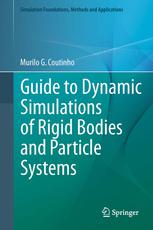

Most ebook files are in PDF format, so you can easily read them using various software such as Foxit Reader or directly on the Google Chrome browser.
Some ebook files are released by publishers in other formats such as .awz, .mobi, .epub, .fb2, etc. You may need to install specific software to read these formats on mobile/PC, such as Calibre.
Please read the tutorial at this link: https://ebookbell.com/faq
We offer FREE conversion to the popular formats you request; however, this may take some time. Therefore, right after payment, please email us, and we will try to provide the service as quickly as possible.
For some exceptional file formats or broken links (if any), please refrain from opening any disputes. Instead, email us first, and we will try to assist within a maximum of 6 hours.
EbookBell Team

4.1
30 reviewsThis book introduces the techniques needed to produce realistic simulations and animations of particle and rigid-body systems. The text focuses on both the theoretical and practical aspects of developing and implementing physically based dynamic-simulation engines. Each chapter examines numerous algorithms, describing their design and analysis in an accessible manner, without sacrificing depth of coverage or mathematical rigor. Features: examines the problem of computing an hierarchical representation of the geometric description of each simulated object, as well as the simulated world; discusses the use of discrete and continuous collision detection to handle thin or fast-moving objects; describes the computational techniques needed for determining all impulsive and contact forces between bodies with multiple simultaneous collisions and contacts; presents techniques that can be used to dynamically simulate articulated rigid bodies; concludes each chapter with exercises.